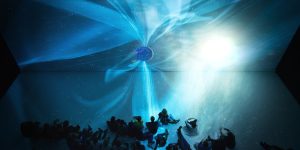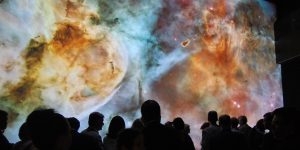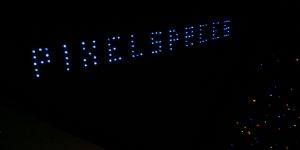Otto Naderer
-

Vedaport / Monolith
The six meter tall Monolith – completed in spring 2014 – consists of 24 frameless screens, wrapped in translucent mirror panels. These panels render the Monolith almost invisible at first glance and enhance it.
-

Deep Space 8K
The Deep Space 8K has received a major upgrade in 2022 – read all about the technical innovations as well as the latest programs on our Deep Space 8K EVOLUTION page!
-

pharus
Das Tracking System pharus wurde im Ars Electronica Futurelab von Forscher und Künstler Otto Naderer entwickelt, um einer beliebig großen Gruppe von Personen in nahezu jeder Umgebung Interaktionsmöglichkeiten zu bieten.
-

Spaxels
Drone shows and swarm art performances
Im September 2012 wurde am Linzer Donauufer ein neues Medium geboren: Der weltweit erste groß angelegte Outdoor-Formationsdrohnenflug erleuchtete den Nachthimmel als Teil und Herzstück des Open-Air-Musikfestivals Klangwolke.
-

Human Robot Harmony
Forschung mit dem humanoiden Roboter ASIMO
Das Ars Electronica Futurelab und Honda R&D forschten gemeinsam an der nächsten Generation der Beziehung zwischen Mensch und Roboter – im Mittelpunkt stand dabei der humanoide Roboter Honda ASIMO.
-

Deep Space
In 2009, the inspiring possibilities of the CAVE technology were the starting point for a new, visionary concept to expand and optimize VR technology for a broad public in the Ars Electronica Center and its constantly growing number of visitors.
